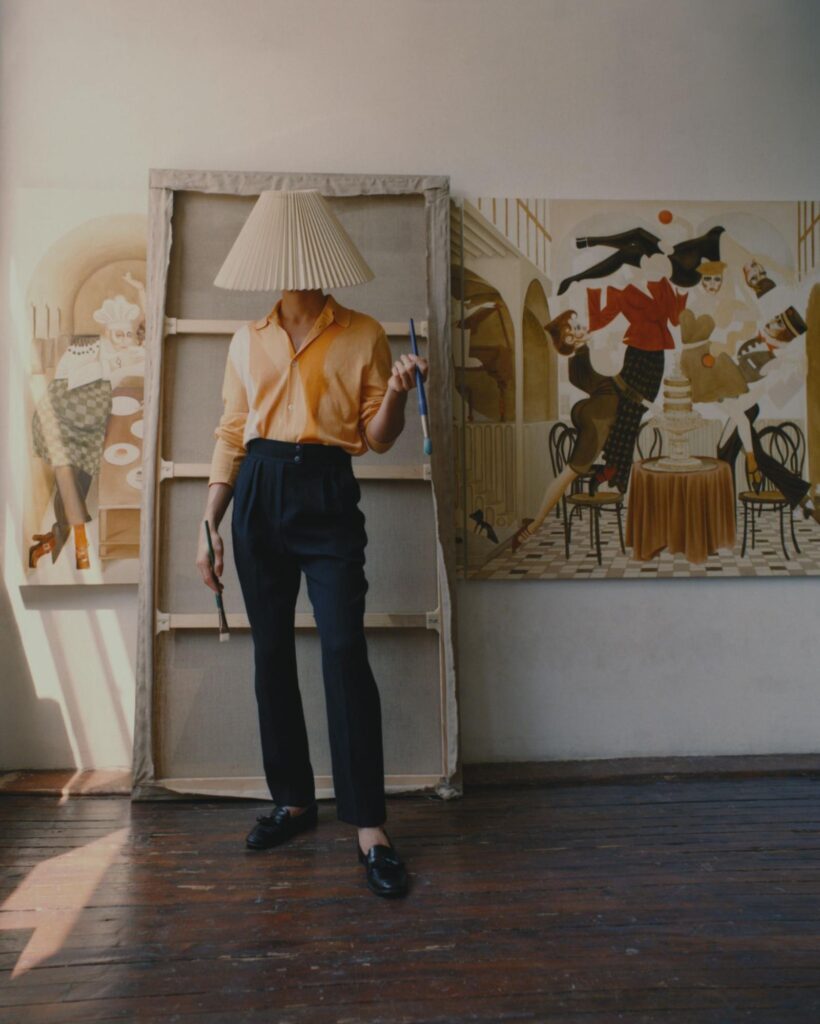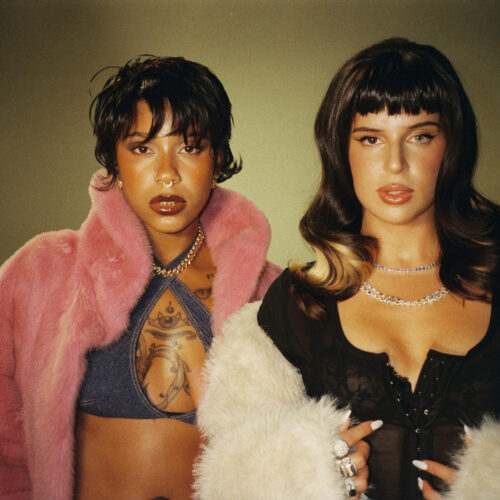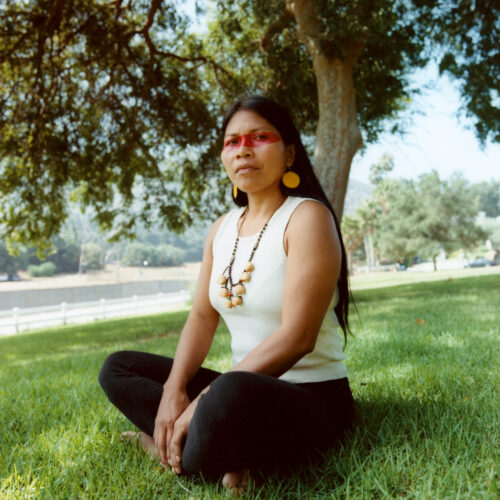Jean-Pierre Villafañe’s work might make you blush, smile or look twice. The New York City artist is rapidly gaining prominence. At this year’s Armory Show, he was awarded The Present Prize for outstanding booth with Embajada Gallery. At the upscale New York City bar Cecchi’s, his figures dance jovially over diners’ heads. In his paintings, Villafañe profoundly explores the relationship between performance and life. His work – at times sensuous and indulgent – satirizes social constructions of the self. The thirty-year-old artist dramatically envisions the escape from the seriousness and decorum of everyday life in favor of delightful debauchery.
Villafañe’s journey in the creative field began off the canvas. He received his BFA from Savannah College of Arts and Design in 2016 before moving to New York City to pursue a Master’s in Architecture at Columbia University. “During my transition from architecture to painting, you see a lot more geometrical rectilinear-like shapes [in my work]” says Villafañe, from his New York studio. Over a virtual studio visit, he shares that his self-taught artistic journey began with abstract painting, which slowly morphed into cubist figural paintings. His current figural style is characterized by elongated limbs, fragmented bodies, and sharp shadows.

Photography by Andrés Jaña.
Equally as important to the artist’s work is his lived environment. Born in Puerto Rico, the island’s annual festivals were his first encounter with people from all walks of life coming together to celebrate. “I’ve always thought about the carnivalesque nature of the Latin culture – we have a lot of carnivals in every Latin American country” says Villafañe. Once he moved to New York City, the carnivalian energy in the city’s merging cultures played out in front of him like theater. Through Villafañe’s eyes, New Yorkers “carry this dogmatic identity throughout the day that is very serious and very disciplined, with an established pattern of behavior. And the idea is that when the night falls, or they’re caught in this moment where [they’re] not supposed to be seen, they have this totally different persona.” It is those moments of intimacy that Villafañe magnifies.

Jean-Pierre Villafañe, Behind the Curtain, 2023. Oil on linen, 58×68 in.
Working with canvas, murals, and sculpture, the artist hones in on the exuberance of a late night party to distort reality. Works like “Behind the Curtain” hint at life as one big performance dependent on an audience. If the performers are “behind the curtains” then the viewer is invited to witness their escape from monotony and rehearsed behavior. Like a scene from the roaring twenties, there is glamor in excess. Colorful fabrics and fishnets intertwine and androgynous bodies merge. Heavy make-up and flashy garments ornament their bodies. We witness the chaos of performers in between acts.
The bright palette of “Behind the Curtain” directly speaks to the symbiosis between Villafañe’s immediate context and painting. Seasonal changes influence the tonality of his work. His summer creations are lively and vibrant while fall brings neutral warm tones. Lately, he’s spent less time in large gatherings, so he’s gravitated to creating duets of people: “This summer a lot of my friends left town but when they started coming again, I started thinking, ‘I want to put this person and that person back again, back in the play.’”

Jean-Pierre Villafañe, Beneath The Suit, 2023. Oil on linen, 58×68 in.
Villafañe’s formal training as an architect is keenly present in his pictorial vocabulary, as the scenes he depicts are often framed by columns and archways. A building’s interior acts both as a physical space for respite but also as an extension of an alternative private sphere. Particularly during the pandemic, “The house became the total center of human life.” Within the privacy of an enclosed space, Villafañe says that we “escape reality or the chaos of the outside world.” In “Beneath The Suit,” a lively party takes place after business hours when irreverent behavior is on full display. In Villafañe’s words, “You don’t know if the banker is wearing drag or whose leg is whose.”
At the Armory Show, Villafañe debuted “Midnight Sculpture,” a voyeuristic diorama that invited audiences to look through a cross-shaped aperture. Visitors who peered in could view clusters of nude bodies dancing from various windows. Since the diorama had a peering hole on each plane, viewers could also see other curious eyes. In this way, viewers “became the performers as they all merged in the center.” This both implicates viewers in the act of viewing, while highlighting the fine line between innocent curiosity and invasive intrusion. In our conversation, Villafañe toys with the idea of a life-sized, immersive work that people can actually walk into — themselves becoming the piece’s vaudevillian players — to blur the lines between art and reality.

Photography by Andres Jaña
Still early in his career, Villafañe absorbs creative inspiration from across the board. He reads widely, everything from Renaissance art and fiction to performance theory. For an upcoming group exhibition at Diablo Rosso gallery in Panama, he is working on a canvas that places his riotous pleasure-seekers inside a dollhouse, where each room, including the bathroom, will feature an intimate gathering. The work in progress views the building as if cut in half, exposing what’s inside. That in itself has opened a plethora of new ideas. Looking to the future, Villafañe can see himself translating this creative ecosystem into costume and theater next. “I’ve always been fascinated by the idea of doing set design and costume design.”
Though Villafañe’s work at first glance may seem like that of another era, it is rooted in the duality of human behavior today. “You have folks that just live here and follow quotidian routines, or are playing dominoes on the street, or they’re always hanging out with their dog in the corner of the supermarket smoking a cigarette.” Above all, his work is nourished by people. “Maybe one day when I’m older, I’ll find beauty in solitude, but for now, I think I like to be surrounded by people that I can talk to.” Those same city-dwellers must cut loose at some point, and Villafañe articulates the raw moment of their release.
Joanna García Cherán is an art historian, writer and cultural worker passionate about art of our time.









